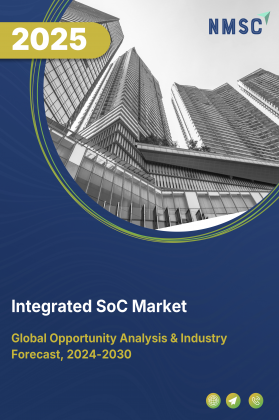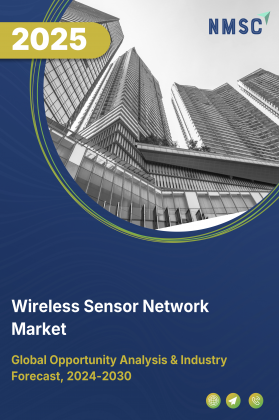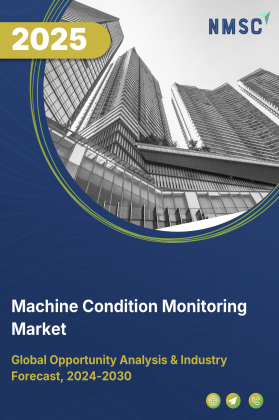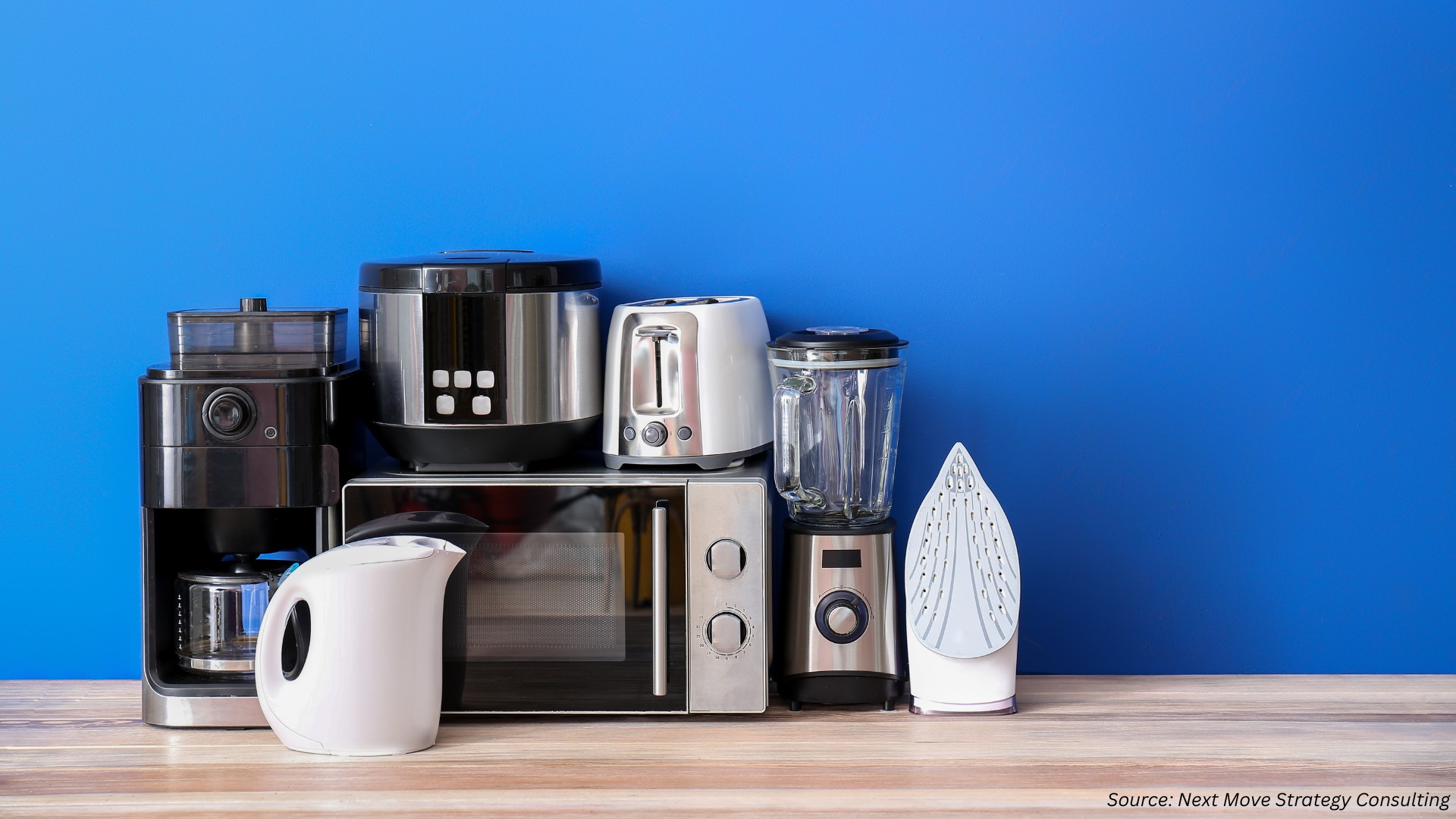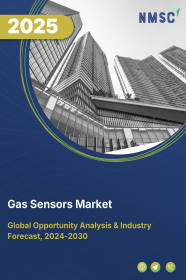
Gas Sensors Market by Type (Wire, and Wireless), by Gas Type (Oxygen, Carbon dioxide, Carbon Monoxide, Nitrogen Oxide, Hydrogen, Methane, Volatile Organic Compound (VOC), Ammonia, and Other Types), by Technology (Electrochemical, Acoustic, Metal Oxide Semiconductor, and Other Technology – Global Opportunity Analysis and Industry Forecast 2024-2030
Market Definition
The Gas Sensors Market size was valued at USD 2.17 billion in 2023 and is predicted to reach USD 3.68 billion by 2030 with a CAGR of 9.21% from 2024-2030.
Gas sensors are devices that are used to detect and measure the presence and concentration of various gases around the environment. Gas sensors are used in industrial settings to monitor the presence of toxic and combustible gases, ensuring a safe working environment for workers.
They are employed in facilities such as chemical plants, refineries, and manufacturing units to detect leaks and prevent potential accidents. Additionally, gas sensors are integrated into heating, ventilation, and air conditioning (HVAC) systems in industrial buildings to detect the presence of gases and ensure proper ventilation. Their ability to detect and measure the concentration of gases makes them essential components in various industrial processes and applications.
Market Dynamics and Trends:
The global surge in chemical production such as caustic soda, liquid chlorine, and formaldehyde is driving the demand for gas sensors. For instance, the global production of chemicals increased by 2.7% in the year 2022. With such rise in the global chemical sector, the demand for gas sensors to monitor hazardous gas leakages to mitigate the risk of accidents and fatalities is poised to increase, boosting the growth of the market.
Moreover, rising mining sector such as gold mines, coal mines, and rare earth metals around the world is further propelling the growth of the market. According to a report published by Global Energy Association, the global production of coal increased by 7.9% in the year 2022.
This increase in production is significantly boosting the demand for gas sensors, as they are widely use to detect the presence of gases such as methane, carbon monoxide, and hydrogen sulphide, ensuring safety of the workers in the workplaces.
Furthermore, the growth of the global automotive manufacturing industry is driving the demand for gas sensors, essential for ensuring safety and regulatory compliance in production facilities. According to a report published by European Automobile Manufacturer’s Association, in May 2023, the production of motor vehicles increased by 5.7% in the year 2022 compare to the year 2021.
With more vehicles being produced to meet increasing consumer demand, there's a greater need to enhance safety measures within manufacturing plants to mitigate potential risks associated with hazardous gas emissions. Gas sensors play a critical role by continuously monitoring for harmful gases including carbon monoxide and nitrogen oxides, promoting safety, compliance, and sustainability within the automotive industry.
However, gas sensors typically require regular calibration and maintenance to ensure accurate and reliable operation, adding to the overall cost and complexity of their implementation, thus restraining the market growth. On the other hand, emergence of novel materials such as mesoporous metal oxides, and metal oxide nano materials is expected to create future opportunities for the market. These advance materials increase sensitivity through large sensing areas and enabling gas detection, enhancing the productivity of the sensors.
Market Segmentations and Scope of the Study:
The gas sensors market is segmented on the basis of type, technology, end-user, and region. On the basis of type, the market is divided into oxygen, carbon dioxide, carbon monoxide, nitrogen oxide, hydrogen, methane, volatile organic compound (VOC), ammonia, and others. On the basis of technology, the market is bifurcated into electrochemical, acoustic, metal oxide semiconductor, and others. On the basis of end-user, the market is segmented into industries, food processing, agriculture, consumer electronics, healthcare, and others. Regional breakdown and analysis of each of the aforesaid segments include regions comprising North America, Europe, Asia-Pacific, and RoW.
Geographical Analysis:
Asia Pacific holds the dominant share of gas sensors market at present and is expected to continue its dominance during the forecast period. This is due to the rapidly growing chemical sector within the region. According to a report published by India Brand Equity Foundation, in August 2023, the chemical sector in India is expected to reach USD 1 trillion by 2040. This robust expansion of the chemical industry necessitates stringent safety measures and regulatory compliance, thereby propelling the demand for gas sensors to ensure the monitoring and detection of hazardous gas emissions.
Moreover, the increase in automobile sector within the region is further propelling the growth of the gas sensors market. According to a report published by the China Association of Automobile Manufacturers, in July 2023, the car production within China increased by 2.5% in 2023 compared to the year 2022. This increase in production of automotive sector is boosting the demand for gas sensors in automotive industries, thereby propelling the growth of the market.
On the other hand, North America is showing a steady rise in the gas sensors market due to the surge in gold mining sector within the region. As per World Gold Council, in June 2023, in 2022, the combined gold production of North American countries reached 491.2 tonnes. Among them, Canada stood fourth in gold production, yielding 194.5 tonnes.
With such increase in the mining sector in this region, the demand for gas sensors for the early detection of toxic gases for the protection of workers is rising, propelling the growth of the market. Moreover, the gas sensors market is driven by the increasing number of constructions such as office building, lodging, and healthcare infrastructures within the region.
According to a report published by the US Census Bureau, in February 2024, the total number of constructions increased by 13.9% in the year 2023 compared to 2022. Gas sensors are extensively used in buildings for heating, ventilation, and air conditioning (HVAC) systems to monitor indoor air quality, detect harmful gases, and ensure the efficient operation of HVAC equipment, promoting sustainable building practices.
Competitive Landscape:
The gas sensors market trends comprising of various market players such as Honeywell International Inc., ABB Ltd., Siemens AG, Robert Bosch GmbH, Alphasense Inc., FIGARO Engineering Inc., SenseAir AB, Membrapor, Amphenol Corporation, Angst+Pfister Sensors and Power AG, among others. These market players are adopting various strategy such as launch and acquisition of business across various regions to maintain their dominance in the workplace safety market.
For instance, in August 2023, Figaro Engineering Inc., launched the TGS2616-C00 and TGS2616-C01 hydrogen sensors. The TGS2616-C00 sensor features high selectivity to hydrogen, a small size, low power consumption, and a simple electrical circuit. The sensors are used for hydrogen detection in steel plant safety, portable gas detectors, leak detection for gas appliances, and hydrogen leak detectors for fuel cell systems.
Moreover, in October 2021, Honeywell launched two new Bluetooth-connected open-path gas detectors, the Searchline Excel Plus and Searchline Excel Edge, designed to provide advanced monitoring for dangerous leaks. These gas detectors use advanced optics and high-powered infrared technology, allowing them to stay online in bad weather conditions. These solutions are particularly beneficial for industries such as oil and gas, petrochemical, and chemical sector.
Key Benefits
-
The report provides quantitative analysis and estimations of the gas sensors market from 2024 to 2030, which assists in identifying the prevailing market opportunities.
-
The study comprises a deep dive analysis of gas sensors market including the current and future trends to depict prevalent investment pockets in the market.
-
Information related to key drivers, restraints, and opportunities and their impact on gas sensors market is provided in the report.
-
Competitive analysis of the players, along with their market share is provided in the report.
-
SWOT analysis and Porters Five Forces model is elaborated in the study.
-
Value chain analysis in the market study provides a clear picture of roles of stakeholders.
Key Market Segments
By Type
-
Wire
-
Wireless
By Gas Type
-
Oxygen
-
Carbon dioxide
-
Carbon Monoxide
-
Nitrogen Oxide
-
Hydrogen
-
Methane
-
Volatile Organic Compound (VOC)
-
Ammonia
-
Other Types
By Technology
-
Electrochemical
-
Acoustic
-
Metal Oxide Semiconductor
-
Other Technology
By Application
-
Water & Wastewater Treatment
-
Aerospace & Defense
-
Automotive & Transportation
-
Oil & Gas
-
Consumer Electronics
-
Other Application
By Region
-
North America
-
The U.S.
-
Canada
-
Mexico
-
-
Europe
-
The UK
-
Germany
-
France
-
Italy
-
Spain
-
Denmark
-
Netherlands
-
Finland
-
Sweden
-
Norway
-
Russia
-
Rest of Europe
-
-
Asia Pacific
-
China
-
Japan
-
India
-
South Korea
-
Australia
-
Indonesia
-
Singapore
-
Taiwan
-
Thailand
-
Rest of Asia Pacific
-
-
RoW
-
Latin America
-
Middle East
-
Africa
-
REPORT SCOPE AND SEGMENTATION:
|
Parameters |
Details |
|
Market Size in 2023 |
USD 2.17 Billion |
|
Revenue Forecast in 2030 |
USD 3.68 Billion |
|
Growth Rate |
CAGR of 9.21% from 2024 to 2030 |
|
Analysis Period |
2024–2030 |
|
Base Year Considered |
2023 |
|
Forecast Period |
2024–2030 |
|
Market Size Estimation |
Billion (USD) |
|
Growth Factors |
|
|
Countries Covered |
28 |
|
Companies Profiled |
10 |
|
Market Share |
Available for 10 companies |
|
Customization Scope |
Free customization (equivalent up to 80 working hours of analysts) after purchase. Addition or alteration to country, regional, and segment scope. |
|
Pricing and Purchase Options |
Avail customized purchase options to meet your exact research needs. |
KEY PLAYERS
-
Honeywell International Inc.
-
ABB Ltd.
-
Siemens AG
-
Robert Bosch GmbH
-
Alphasense Inc.
-
FIGARO Engineering Inc.
-
SenseAir AB
-
Membrapor
-
Amphenol Corporation
-
Angst+Pfister Sensors and Power AG




















 Speak to Our Analyst
Speak to Our Analyst



